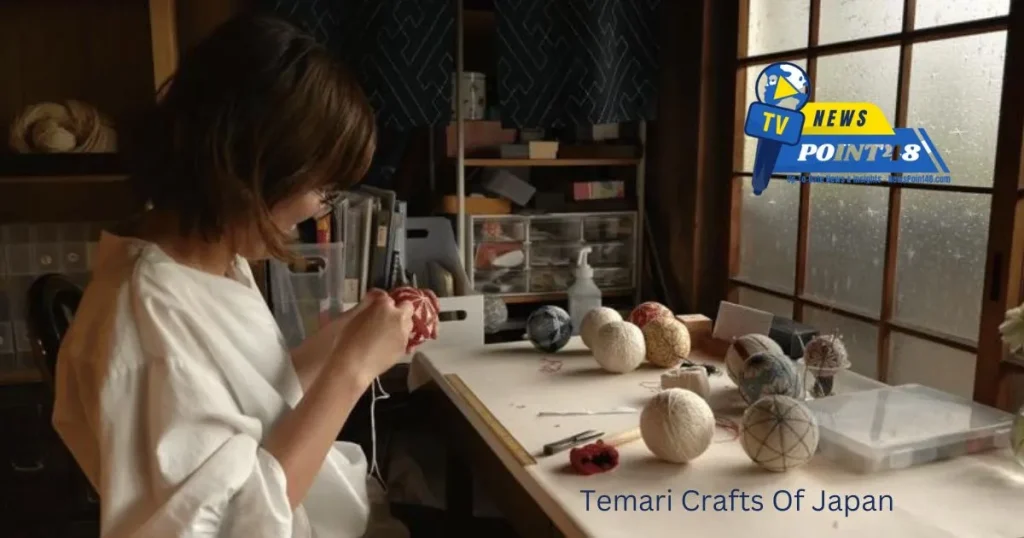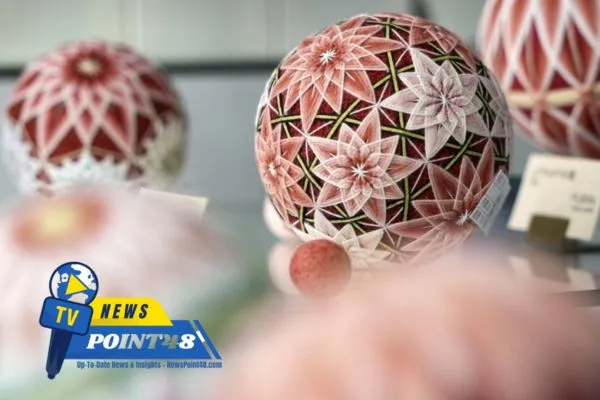
Thanks to the efforts of devoted artists, the once-forgotten Temari Crafts – an ancient handicraft from Japan that dates back to the seventh century – is slowly becoming more popular again. As it was seen as a recreation and an amulet in society, kemari’s practice was done by forming embroidery patterns on softballs using colorful threads. It lost its prominence in the changing times. However, it is heartening to know that for this age-old craft, there is a steady number of people coming forward to practice it.
What is Temari?
Temari Crafts is derived from the Japanese term “te” meaning hand and “Mari” meaning ball, a handmade toy for the child. As years progressed, it was beautified to what artisans termed as max e aperture presented on soft fabric balls covered with stitches and colorful silks. In Japan, O-Moshiro, which is a handspun ball, is used or given as a New Year’s or any neighboring day’s gift, and human aspiration of affluence is woven as though a cord in it. Such decorative pieces are so intricately stitched and woven that they can turn into beautiful wall decorations or Table pieces.
An artisanal approach to the creation of a single temari ball demands a lot of concentration, skill as well as a willingness to work fastidiously on details. Artisans have to sit for several hours or even days wrapped in color stands winding and stitching them around with dozens of patterns. This has left many admirers in those people watching the eaters of the cultural item they have used constructed by active working artisans.
The Revision of Temari

The change in lifestyle due to the growth of industries and technological entertainment during the 20th century led to the sidelining of some traditional art forms like Temari. Many civilizations in Japan were on the verge of dying out due to the Industrial Revolution, in which younger people preferred newer and more engaging activities. Instead, what used to be a popularly practiced and beloved craft has turned out to be a rare and nearly lost art called Temari Crafts
Nevertheless, the restoration of traditional temari has recently been carried out by zealous artisans in an attempt to retain the practice in society. Thanks to their strive, what used to be minimal development is now being acknowledged and centuries back down the lane is now said to be on the rise.
A New Hope
Restoration of Temari art has been mainly encouraged by a new breed of artisans who have vowed to within this ancient practice to the present day context. Most of these artists have functional workshops and conduct classes for other people on the biological process involved in the making of Temari. These workshops not only provide an avenue for knowledge transfer but also provide an opportunity for other eager lovers of Temari in other countries to learn and practice the art.
One such artist, [Insert Artisan’s Name], explains, “Temari is not just an art form — it is a subject through which one can reach back and revive the Japanese culture for the present time.” These craftspeople have used social media sites to introduce Temari and let it cross the barriers of culture and geography.
Retaining Custom In Modern Times

Apart from realizing the craft and conducting the workshops, many Temari creators are making use of the internet to create awareness and attention towards this craft. Starting from instructions that are specialized in such artworks to colorful Instagram accounts that post their works the cyberspace for the artisans has expanded tremendously. They do not wish to conserve “the tradition”. Rather, they wish to better it using what is technology today, for the modern patrons of art.
Furthermore, with modernity has also come a keener appreciation for art classes including the art of creating Temari. The beauty of a Temari is that it caters to both objects of desire as well as meditation. People engage in souvenir seeking but more consciously now – as such the new age classes for Temari will reignite interest in those creative ones looking for a new ancient craft to master.
The Look Ahead: What Will Temari Become?
Seeing how Japan has always managed to blend the old with the new, one can’t help but see how Temari Crafts will develop in the future. Even if it remains a marginal craft, the attention it garners from young people and foreigners guarantees that the art of Temari will still be cherished for decades to come.
Temari Crafts is more than some decorative handiwork; it is also a representation of a struggle and the preservation of culture and continues to be so through the efforts of the artists who wish to keep this beautiful tradition alive.
